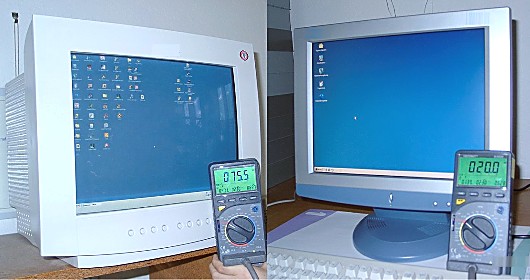| |
Energy
Efficiency Reduces Energy Losses - the Energy Demand Approaches
Zero |
|
|
The figure illustrates
the basic principles of increased energy efficiency. It shows why
energy efficiency can substitute energy: The state of the art in marketable products for energy efficiency is underestimated regularly: A window used in passive houses saves some 70% of the heat loss of existing double pane glazings; a good additional insulation of an exterior wall can save almost 90%, and an efficient heat recovery unit 75 to 90% of the ventilation losses. Through such measures, the major part of the former energy consumption is no longer required. What small amount remains can be covered by several options. Even if conventional energy sources will be used, the situation will be fairly improved, because resources will last longer and environmental pollution is reduced.
The computer sector could do much more on an energy efficinet design of their products. It is possible to have the full service of a PC incl. monitor and peripherials using only 5 to10 Watts continuous power. This is shown by the project "One Laptop Per Child". We support this project - it is a contribution to the most important future task, to improve education worldwide. See this link for further information: |
| Energy
efficiency does not require a compromise in occupant comfort - not
at all. Using higher efficiency makes it possible to increase
comfort while reducing energy consumption. The Passive House
is a perfect example for what can be done with really energy
efficient concepts: The energy consumption of Passive Houses is
just some 10% compared to the average of the building stock, but
the comfort in the buildings is even better. This has been proven
by monitoring of
Hundreds of built Passive Houses. updated: 2007-05-13 WF - thanks to Peter Cox for proof reading the first edition © Passive House Institute; unchanged copy is permitted, please give reference to this page |

